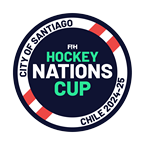
With slow-mo replays, different camera angles and close-up shots, there is no hiding when it comes to making the right decision at a televised sports event. There are numerous occasions when a referee in a soccer match has been berated, lampooned and vilified because of a decision that, with the benefit of hindsight and technology, was the wrong one and ultimately changed the course of the game. But in football, once a decision has been made, the referee cannot go back and change his or her mind. As every rational being knows, mistakes will happen, so hockey has taken major steps in recent years to ensure that a potentially match-changing decision can be questioned and, if necessary, reversed. Rather than highlighting umpire errors, referrals often demonstrate just how good the umpire's decision was, and for the players and coaches, the sense that they are victims of a wrong decision has been removed. As a spectator, the slow-mo replays and use of angles just adds to the sense of occasion and excitement.
When video referrals were first introduced as a trial at the men's Champions Trophy in Melbourne, Australia in 2009, the aim was to provide a way of reducing umpiring errors that may have a major impact on the result of a match. The system was quickly approved and used in the subsequent World Cup in Delhi in 2010. Now it is part and parcel of top level international hockey events, and is a system being watched closely by other sports, particularly football, as it is a simple means of eliminating potentially match-changing wrong decisions.
In essence, the video referral allows two types of referral. An umpire referral can only be called by the two match umpires and is used when an umpire is not certain they have made, or are able to make, the correct decision relating to a goal. A team referral can be called by any member of the team on the pitch and is restricted to decisions within the 23 metres area relating to the award or non-award of goals, penalty corners and penalty strokes. Each team has one referral, if a team referral is allowed then the team keeps its right to refer, a decision that goes against the referral means the team loses that right.
Carol Metchette was the video umpire at the Rabobank Hockey World Cup in The Hague and is a former World Panel Umpire. She gives her thoughts on video referrals: "I think the use of video referrals has made a huge difference to the game. Lots of sports are using this technology now and it’s definitely the way forward. All umpires, even the best, will miss things so getting the correct decision makes everybody happy. The decisions that go to Video Umpire (VU) are obviously big ones so players get very frustrated if they feel this has been given incorrectly by the umpire. When the decision comes back the teams can then forget about the ‘mistake’ or nothing being blown. This makes life much easier for the umpire. Teams are not holding a grudge with them for the rest of the game."
There is a concern that the use of video referral can undermine an umpire, particularly if the decisions continually go against them. Carol agrees that this can be a problem, but she says that with experience, umpires will realise that it is good for the game to have such a transparent system. As the VU, she meets the umpires prior to the game and has a chat about the process. "I think when umpires use VU for the first time it can affect them. They feel ‘oh crap’ I’ve got it wrong in front of all these people. But with more experience they realise how helpful it can be. I say to them I’ll give what I see and if I change a decision I am sorry! I think this gives them confidence that I am their ‘friend’ and there to help."
Certainly players and coaches are in favour of the use of video referrals, although there is sometimes frustration when a team loses its right to refer early in the match. Coaching players to call referrals in the right circumstances is now an important element of a team's preparations. Carol says that she would be loathe to see teams have more than one referral: too many would disrupt the game. "One per game keeps teams from referring stupid things when they know it's precious."
Key to the success of the referral system is the speed with which the television crews are able to provide replays and the quality of the replays. Carol says that the angles and super-slow cameras in The Hague were excellent and most of the replays were provided within seconds of being called. "There were occasionally some delays, but I think we managed 90 seconds on average, which wasn’t too bad. I think this amount of time is not disruptive to the game, especially as an important decision has to come out of it."
One major element in a successful video referral system is the part the umpires on the field can play in speeding up the process. The time for a video referral starts as soon as the whistle is blown, but the VU cannot start watching a replay until he or she knows what is being questioned. In an attempt to speed things up, the language used to question the decisions has been relaxed – previously it had to be worded very precisely – but this still remains an area of frustration for many people and one that umpiring committees are working hard to address. It is not helped when players and umpires do not speak the same language – the use of translators is one potential solution to this problem.
There is still some ironing out to be done, but hockey's early adoption of technology is certainly gaining attention from other team sports.






















